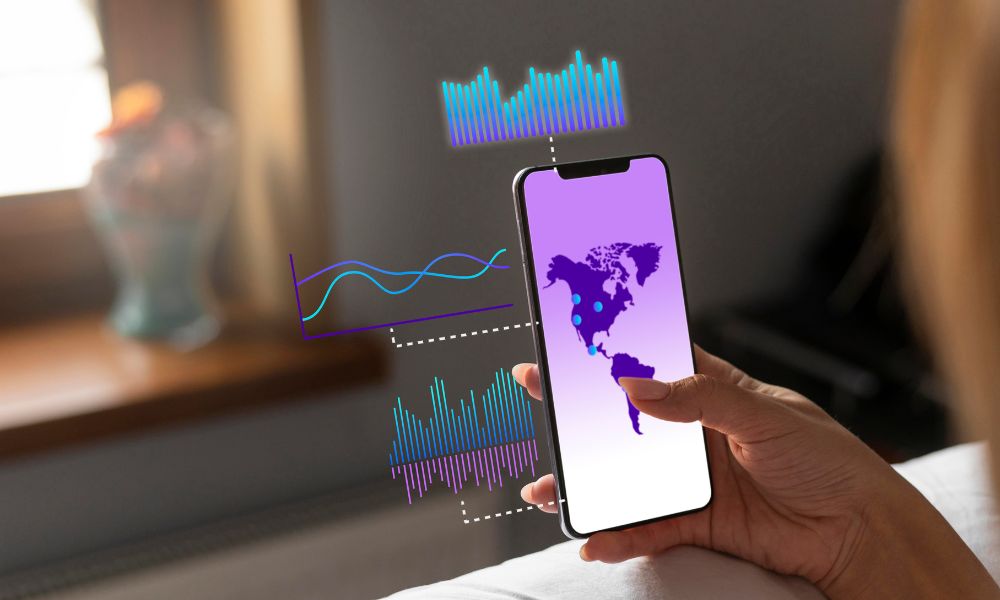Influencer marketing has moved far beyond simply partnering with popular creators and hoping for visibility. Today, every campaign is expected to deliver measurable results. The challenge for many brands is knowing what to measure and how to make sense of it. Without the right indicators in place, it’s easy to misinterpret success, invest in the wrong strategies, or struggle to show value to stakeholders.
This is where KPIs come in. Key Performance Indicators help you focus on what truly matters for your campaign. They provide a clear link between your objectives and the outcomes you’re achieving. When chosen well, KPIs show whether your influencer partnerships are building awareness, driving engagement, generating leads, or bringing in sales. They also make reporting straightforward and help you adjust your approach as you go.
In this guide, we’ll look at what makes a KPI different from a basic metric, explore the essential KPIs every influencer marketing campaign should track, and share how to align them with your goals. You’ll also find practical advice on measurement tools, reporting techniques, and ways to ensure your efforts create lasting impact.

What Are KPIs? (And Why They’re Different from Metrics)
Before you can measure success, you need to know what you’re measuring. Many campaigns fall short because they track every number they can find, without asking whether those numbers reflect real progress. This is where KPIs make a difference.
Definition of a KPI (Key Performance Indicator)
A Key Performance Indicator, or KPI, is a measurable value that shows how effectively you’re achieving a specific objective. In influencer marketing, a KPI isn’t just any data point; it’s a metric directly tied to your campaign goals. For example, if your goal is to drive sales, tracking the number of purchases from influencer links is a KPI. If your aim is to grow awareness, impressions from influencer posts might be one of your KPIs.
KPIs vs Vanity Metrics: What’s the Difference?
Not all metrics are created equal. Vanity metrics are numbers that look impressive but don’t necessarily tell you anything about impact. High follower counts or video views might seem encouraging, but if they don’t lead to engagement, conversions, or other meaningful actions, they’re not driving your business forward. KPIs, on the other hand, focus on results that align with what you want to achieve. This distinction keeps your reporting honest and your strategy on track.
Aligning KPIs with Your Campaign Goals
Every campaign should start with a clear objective, and your KPIs should reflect that objective. If you’re running an awareness campaign, KPIs like reach and brand mentions make sense. If you’re aiming for conversions, you’ll want to track signups, downloads, or purchases. This alignment ensures that every action you take and every influencer you work with supports the outcome you’re after. It also helps set clear expectations with stakeholders and influencers alike.
How Clear KPIs Improve ROI, Budgeting, and Strategy
Well-defined KPIs do more than measure progress; they guide decision-making. They tell you where to allocate budget, which partnerships are worth continuing, and when it’s time to adjust your approach. By focusing on what truly matters, you can optimize campaigns for better ROI and build a foundation for long-term success. In short, KPIs transform influencer marketing from guesswork into a strategy driven by evidence and results.
The 6 Essential Influencer Marketing KPIs
Once you understand what KPIs are and how they differ from vanity metrics, the next step is knowing which ones to track. Not every campaign needs the same indicators, but there are six core KPIs that give you a clear picture of performance and help you make informed decisions.
#1 KPI: Reach and Impressions
Why visibility still matters? While awareness alone doesn’t guarantee results, it’s still a vital starting point. Reach measures how many unique users have seen your content, while impressions count the total number of times it was displayed. Together, they show how far your message is spreading. High reach means you’re getting in front of new potential customers, and strong impressions indicate repeat exposure that can build familiarity with your brand.
How to interpret reach vs impressions? Reach is about breadth, impressions are about frequency. A post with a reach of 50,000 but 200,000 impressions means users are seeing it multiple times, which can reinforce brand recall. However, if impressions are high and engagement is low, it might indicate content is being shown but not resonating, a sign to revisit your creative approach.
#2 KPI: Engagement Rate
What counts as meaningful engagement? Engagement rate goes beyond likes and views. It considers comments, shares, saves, and any action that shows genuine interest. A post that sparks conversation or encourages people to share is more valuable than one that simply garners passive likes.
Benchmarks for different platforms and influencer tiers – What’s considered a “good” engagement rate varies by platform and influencer size. Micro-influencers often see higher engagement because of their closer connection to their audience, while larger accounts may have lower percentages but broader reach. Tracking these benchmarks helps you evaluate influencer performance fairly.
#3 KPI: Conversions and Sales
Direct response: tracking purchases, signups, or downloads. Ultimately, many campaigns are judged by what they generate. Conversions show how many people took the desired action, whether that’s buying a product, signing up for a newsletter, or downloading an app. This is where unique discount codes, trackable links, and affiliate integrations become crucial.
Indirect influence: long-term customer behavior. Not every conversion happens instantly. Influencer marketing often works by planting a seed that leads to future actions. Monitoring repeat visits, brand search volume, or delayed purchases helps you capture this longer-term value.
#4 KPI: Audience Growth and Quality
Measuring follower growth during campaigns – Influencers can introduce your brand to new audiences, and tracking how your own social channels grow during a campaign shows whether that exposure is translating into a community.
Detecting authentic vs fake follower spikes – Growth only matters if it’s real. Sudden surges in followers without corresponding engagement can indicate fake accounts or poorly targeted campaigns. Using analytics tools to verify authenticity protects your investment and ensures you’re building a genuine audience.
#5 KPIs: Brand Mentions and Sentiment
Using sentiment analysis tools – Mentions track how often your brand is being talked about, while sentiment analysis reveals how people feel about it. Are the conversations positive, neutral, or negative? This qualitative data adds context to your quantitative results.
Measuring qualitative impact on brand image – An increase in positive mentions can signal improved reputation, while a rise in negative feedback may highlight issues to address. Evaluating sentiment alongside engagement gives a fuller picture of your campaign’s impact.
#6 KPIs: ROI and Earned Media Value (EMV)
Simple ROI formula: Return on investment (ROI) shows whether the results justify the spend. A straightforward formula is: (Revenue generated – campaign cost) ÷ campaign cost = ROI.
Keeping this calculation simple ensures clarity when presenting outcomes to stakeholders.
EMV as a comparative benchmark: Earned Media Value estimates what it would have cost to gain the same reach and engagement through paid advertising. While not a perfect metric, EMV can help demonstrate the value influencers bring relative to other channels.

How to Choose the Right KPIs for Your Campaign
Knowing the most common KPIs is only part of the picture. The real value comes from choosing the ones that match your specific goals and context. The right KPIs keep your reporting relevant, make your campaigns easier to optimize, and ensure that you’re showing results that matter to your business.
I Match KPIs to Campaign Types (awareness vs conversion)
Not every campaign aims for the same outcome. If your focus is brand awareness, then KPIs like reach, impressions, and brand mentions are more important than direct sales. On the other hand, if your campaign is designed to drive signups or purchases, you’ll want to prioritize conversions, ROI, and customer acquisition metrics. By making this distinction early, you avoid spreading attention across numbers that don’t reflect your actual goals.
II Adapt KPIs by Platform (Instagram, YouTube, TikTok, etc.)
Different platforms emphasize different types of engagement, and your KPIs should reflect that. Instagram campaigns often revolve around engagement rates and story interactions. YouTube allows for deeper metrics like watch time and subscriber growth, while TikTok is built around reach, viral potential, and trend participation. Adapting KPIs by platform ensures that you’re measuring success according to how audiences naturally behave in each space.
III Tailor KPIs to B2B vs B2C Goals
B2B and B2C influencer campaigns often look very different. A B2C brand might focus on direct sales, viral visibility, or short-term growth. A B2B company, on the other hand, may prioritize lead quality, form submissions, webinar registrations, or brand authority within a niche market. Adjusting KPIs to the type of audience you’re targeting ensures that your measurement strategy stays realistic and actionable.
Tools to Measure Influencer Marketing KPIs
Once you’ve defined the right KPIs for your campaign, the next step is knowing how to track them. The good news is that there are plenty of tools available, from built-in analytics dashboards to advanced all-in-one platforms. The right mix depends on your campaign goals, budget, and the level of detail you need.
Native Tools: Instagram Insights, YouTube Analytics, TikTok Creator Tools
Most platforms give creators and brands access to their own analytics. Instagram Insights, YouTube Analytics, and TikTok Creator Tools are the starting points for tracking performance. They provide details on reach, impressions, engagement, and audience demographics. While these tools are free and reliable, they’re limited to one platform at a time, which can make multi-channel reporting more challenging.
Web Analytics: Google Analytics, GA4
When you want to connect influencer activity to website behavior, web analytics platforms are essential. Google Analytics and GA4 allow you to track traffic, conversions, and user journeys that originate from influencer links. UTM parameters, landing page tracking, and event setups can give you a direct view of how influencer campaigns impact your business objectives.
Social Listening Platforms: Brandwatch, Mention, Sprout Social
For KPIs like brand mentions and sentiment, social listening tools are especially useful. Platforms such as Brandwatch, Mention, or Sprout Social help you monitor how often your brand appears in conversations and whether the sentiment is positive or negative. This kind of qualitative insight is key for understanding the bigger picture around brand perception.
All-in-One Platforms: Hypefy for Discovery, Outreach, Performance, and ROI
If you want a single solution that covers the full process, all-in-one influencer marketing platforms can save time and provide a clearer overview. Tools like Hypefy combine influencer discovery, outreach, campaign management, performance tracking, and ROI measurement in one place.
This means you can move from finding the right creators to analyzing detailed results without switching between multiple tools. For teams managing ongoing campaigns across different platforms, this streamlined approach makes reporting faster and strategies easier to refine.

Final Thought: KPIs Are More Than Numbers, They Guide Your Success
At their best, KPIs are not just statistics to fill a report. They are signals that show whether your strategy is moving in the right direction and where adjustments are needed. By choosing KPIs that align with your goals, you make influencer marketing measurable, accountable, and easier to improve over time.
When you track reach, engagement, conversions, and sentiment with purpose, every number tells a story about how your audience is responding and how your brand is growing. Clear KPIs also give you the confidence to make better budget decisions, report meaningful outcomes to stakeholders, and build stronger partnerships with influencers.
Influencer marketing succeeds when creativity and strategy work together. KPIs connect those two sides, ensuring that campaigns are not only engaging but also effective. With the right approach, you’ll move beyond surface-level metrics and use KPIs as a guide for long-term impact.



